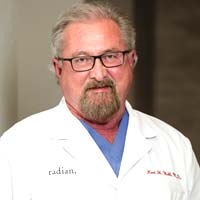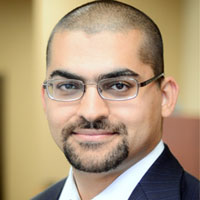ARTAS Robotic System Receives Edison Award
The Wall Street Journal has named the ARTAS Robotic System of hair
restoration for the Edison Award according to the April, ’13 edition of
the journal.
The Edison award program is conducted by Edison
Universe which was initiated to recognize and award best innovations and
discoveries. New technological developments and optimized techniques of
accomplishing a task are selected and awarded to commend the company’s
efforts.
Restoration Robotics Inc. a developer of medical devices which
has made the ARTAS robotic system for hair transplant also confirmed
that it has received the Gold Medal at the 26th Edison Awards Ceremony
in the field of Medical science.
Jim McCollum, the CEO and
President of Restoration Robotics expressed his happiness on receiving
the award. He noted that the ARTAS System was a significant and cutting
-edge innovation which will optimize hair restoration technology.
ARTAS
robotic system can be used to restore hair for patients as an outpatient
procedure. The result is fast and within a week both the donor and
receptor areas on the scalp will look similar and even throughout. The
system is based on advanced digital tech precision robots that are
programmed and guided by an experienced surgeon to transplant hair from
the back and sides of the head which is genetically immune to balding to
the bald area on the top of the scalp.
The hair restoration
procedure is entirely safe and has been approved by the FDA as a safe
medical device which uses digital imagery to map hair groupings or
follicular units. To locate which hair follicles can be removed without
making the donor area (the area from where hair is to be removed)
barren, it is trimmed for being digitized by the ARTAS Robotic System.
The
patient does not feel a thing as a local anesthetic is applied by the
doctor to render the procedure pain free. A skin tensioner is also used
on the scalp which helps the surgeon with accurate location of hair
follicles so that hair can be removed or harvested in its natural
groups.
The precision robotics helps remove follicular units randomly
within the clump of hair so as to maintain the original look in the
donor area. In addition image guidance, digital visualization, dynamic
adjustment to patient movement and selective harvest pattern are
leveraged while removing hair. The entire process is precisely followed
until the required amount of hair is removed.
The viable grafts
are transplanted into the bald areas of the scalp to take the place of
the lost hair. As the process is pain free, scar free and does not
require rest or recuperation, patients can return back to normal
activities within two days.
Within a week head is covered evenly
by short hair growth and both donor and recipient areas look the same.
At the most in six to nine months they will sport natural-looking hair
which can be styled also.
Hairfear
Frequently asked questions about hair transplant procedures
How much does a hair transplant cost?
Hair transplants can vary in price based off of the area in the world that you are interested in getting a hair transplant as well as the size of the area where you may need a hair transplant. Experienced doctors in the United States will often charge some of the highest prices for a hair transplant worldwide and this is why so many travelers make the move to other parts the world like Turkey, India, Thailand, Mexico...etc for their hair transplants.
Will a hair transplant hurt?
Although hair transplants may look like a particularly
unpleasant or painful experience is actually very little discomfort involved
with the surgery itself. Hair transplants are always done under an anesthetic so there's absolutely zero pain during the treatment itself. Many people actually relate the process as being very similar to going to the dentist for filling or root canal. Mild pain can persist over the course of postop treatment but he generally just resumes for a few days.
Who can deliver the best surgery?
It's usually best to consider working with surgeons who have and IAHRS certification or international alliance of hair restoration surgeons recognition. IAHRS can often deliver recommendations for the best surgeons in each particular area.
Is this scarring noticeable?
Any type of hair transplant will require the use of incisions throughout the scalp. There can also sometimes be a small scar from the donor area towards the back of the scalp. Asking to look at photos of the surgeon's previous work will help you to see roughly how bad the scarring could be. In most cases an experienced professional can limit the look of scarring and noticeable marks from the surgery.
How long does it take for the hair to grow?
In most cases hair growth will start within eight months and you can start to see a full effect from the hair transplant after a full year. The initial signs of growth can usually start between 3 to 4 months after the surgery.
Are the results permanent?
The hair follicles that are transplanted are generally the ones which are genetically resistant against the symptoms of baldness. As long as you receive hair loss treatment later in your life after the symptoms of balding have started to subside, you can have a better chance at permanent results.
While everyone know you've had surgery?
If you want to limit the chance that people may find out about your surgery it's important to give at least three weeks of healing as the surgical area will be affected and red just after surgery. After around a month of healing it can look far less noticeable. You could consider wearing a hat while time passes or opting for some extra time off if possible.
How long should I rest after surgery?
It's recommended to rest for at least a few days after surgery so that your body can recover. Trenton to over exert yourself and limit sexual activity, running in the gym for around 10 days after surgery.
Is it possible to lose more hair as a result of surgery?
There is always a chance of shock loss which happens when the hair is weak and miniaturizing after the surgery. As long as the surgeon is choosing the correct hair follicles and performing the surgery well it's possible to minimize the chance of this happening however.
Will I need another hair transplant?
The need for another transplant really depends on the individual. With a solid foundation surgery and working to potentially bolster results with drug therapy, you can improve the stability of the hair that was transplanted as well as prevent further loss. Getting a hair transplant early
on in your 20s or early on in life could lead to needing long-term transplants as hair loss can be progressive.







